Your cart is currently empty!
Plastic Water Bottle Greenhouse for Winter Lettuce
It’s a perfect time to experiment. The plastic water bottle should act like a tiny greenhouse and my lettuce should grow even when it snows.
Your cart is currently empty!
How to start seeds, germinate, grow, and care for them is a gardener’s life skill. Many plants and vegetables fare better when started indoors before the ground warms up. We’ll go over some of the most common (and successful) ways to start seeds both indoors and out, as well as give our favorite tools for the job.
Before proceedign with your seeds, you might want to test the viability of your seeds.
Even though you may be successful direct sowing wildflower seed, there are a variety of reasons why it makes sense to start seeds indoors:
There are some seeds that are recommended to start indoors, including smaller seeds and those that need a little extra heat to germinate. Smaller seeds often need to be ‘thinned’ after they sprout, which is a much easier task indoors at the table then it is outside on your hands and knees. Larger seeds and those with fragile root systems should be sown directly in the ground. There are a few varieties that can be started indoors for earlier blooms or directly sown, it just depends on your preference: Direct Sow:
Start Indoors:
Direct Sow Or Start Indoors, depending on your preference:
There are so many tools available to help with seed starting, althought the majority of them are unnecessary for the resourceful gardener. All you really need is a good vessel to plant the seeds, good seed-starting or germinating mix, and a warm, sunny spot.
That being said, here are some of our favorite tools to successfully start flowers from seed. From left to right, different pots to use for starting seeds:
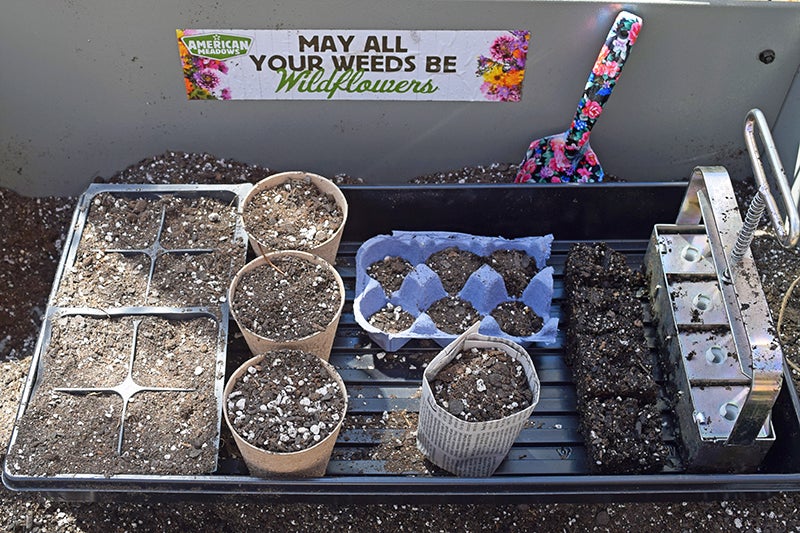

Good seed starting soil, a trowel, and a spray bottle are also very helpful when starting seeds.

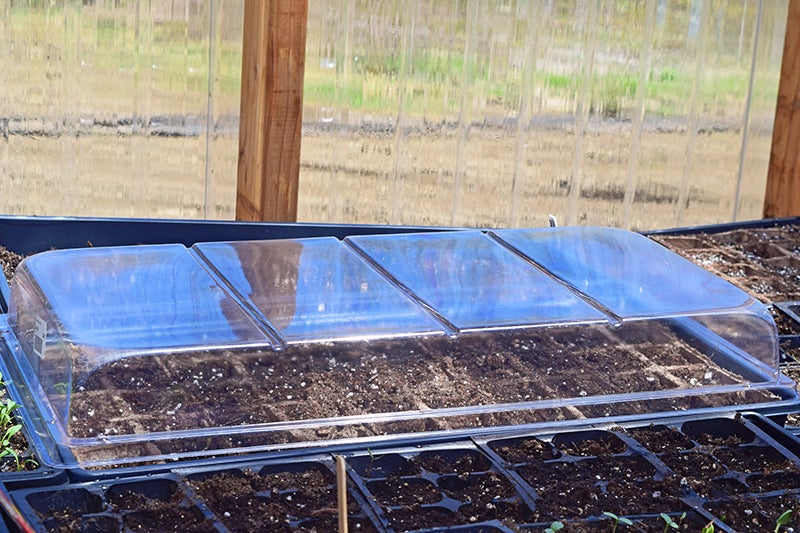
Although there are many different tools for sowing seeds, the method is pretty much the same for every gardener:

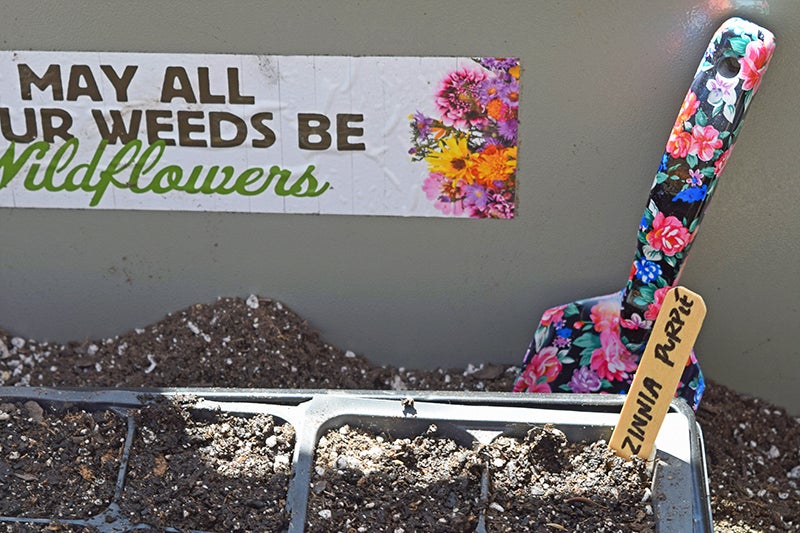
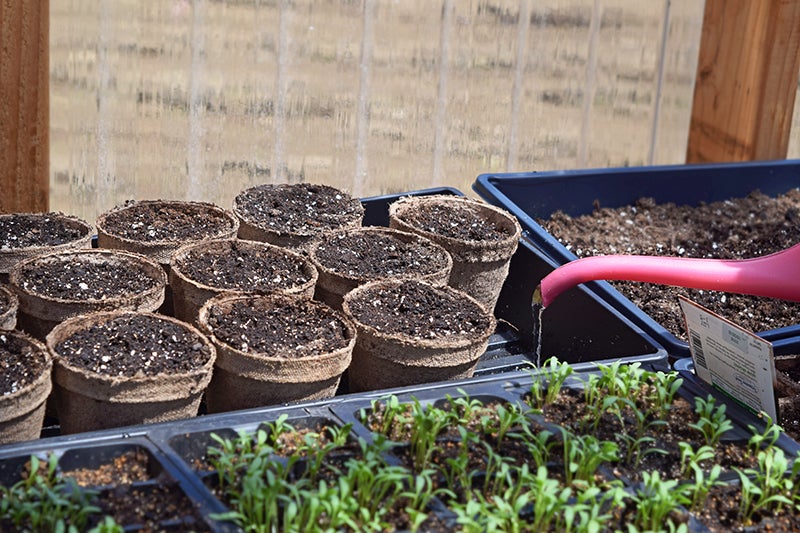
Once you’ve planted, be sure to check your trays each day to ensure they are moist enough. You’ll want to water from below every day (or every other day) depending on how quickly your soil dries. Once your seedlings emerge, remember to remove the plastic dome or saran wrap. Care for the seedlings by watering below when necessary and use a spray bottle to mist the tops. If you have two seedlings growing in one cell, once they are about an inch tall you can remove the weaker (smaller) one by either gently pinching at the base of the stem or snipping with a small pair of scissors. Your goal is to leave the roots of the seedling you plan to keep undisturbed, in case the roots of both plants are intertwined below the soil. This is an important step to make sure the remaining seedling has plenty of room to grow healthy roots.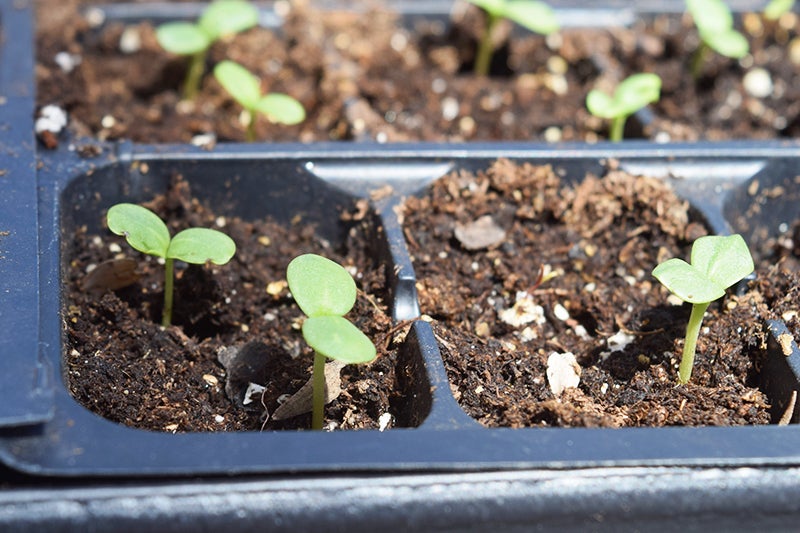
Once your seeds sprout and two seedlings emerge in one cell, gently use your fingers to remove the weakest one.
One of the most common problems with starting seeds is legginess. You can tell if your seeds are leggy if they are extremely thin and growing taller faster than they are filling out. Leggy seedlings are often extremely fragile and need extra care. The biggest cause of legginess is lack of direct sunlight, so if you’re noticing your seeds are looking leggy, make sure to move them to a sunnier spot or add another grow light to your setup. Leggy seedlings can usually grow into healthy plants, but you will want to give them as much sunlight and TLC as possible.
Once there is no more danger of frost in your area, it’s time to plant your seedlings outdoors! Whether you’re planting in containers or directly in the ground, you’ll still want to make sure there is no more chance of frost in your area.
One of the most important steps to ensuring your seedlings grow into healthy plants outdoors is to harden them off before you plant them. Hardening off is a gradual process where you acclimate your seedlings into the harsher sunlight and temperatures outdoors so they don’t get shocked from the different growing conditions:
Use a wheelbarrow or garden cart to harden off your seeds, bringing them outdoors for a few hours each day to get acclimated to outdoor temperatures.
Once acclimated, seedlings will start to take off in your garden beds or containers! Remember to keep the new plants watered regularly and keep an eye on them for the first few weeks. Once you’ve started seeds once, you’ll get the hang of it and many of your tools (including plastic trays, cells, and domes) can be used year after year. Simply wash them in a diluted water/bleach solution to disinfect before planting the next season.
Logging in to comment gives you more features, but it is not required.
It’s a perfect time to experiment. The plastic water bottle should act like a tiny greenhouse and my lettuce should grow even when it snows.
Learn about the different types of caterpillars that attack rose buds and leaves, and discover effective strategies to prevent and control infestations in your garden.
Virginia Mountain Mint is a vigorous, long-lasting plant ideal for wildlife gardens. It attracts pollinators. Read the Quick Growth Guide.
Oxygenation of your pond using a good pond aeration system is crucial for the health of your pond’s ecosystem including the water, fish and plants.
There are some easy-to-grow plants with mosquito repelling properties,
Fall is a great time to harvest vegetables. Here are popular fall vegetables that can be harvested up until the first frost.
GardeningCalendar.ca gets some funding from advertisers. If you click on links and advertisements at no cost to you, the site may receive a small commission that helps fund its operation.
© 2025 J&S Calendars Ltd.